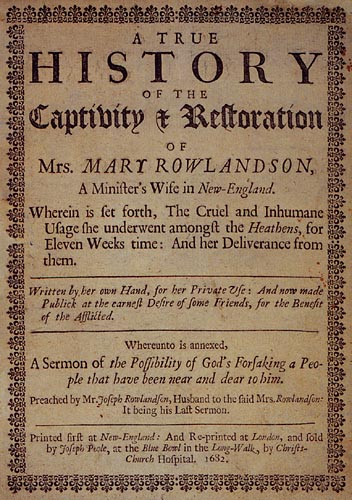John Hoar on:
[Wikipedia]
[Google]
[Amazon]
 John Hoar (1622 – April 2, 1704) was a militia leader and liaison with Native Americans in colonial Massachusetts during
John Hoar (1622 – April 2, 1704) was a militia leader and liaison with Native Americans in colonial Massachusetts during
 John Hoar was born in 1622 in Gloucester, England. His widowed mother brought him to Massachusetts in or around 1641, settling in Scituate no later than 1643.
In 1659, he moved to Concord. At some point during
John Hoar was born in 1622 in Gloucester, England. His widowed mother brought him to Massachusetts in or around 1641, settling in Scituate no later than 1643.
In 1659, he moved to Concord. At some point during
 John Hoar (1622 – April 2, 1704) was a militia leader and liaison with Native Americans in colonial Massachusetts during
John Hoar (1622 – April 2, 1704) was a militia leader and liaison with Native Americans in colonial Massachusetts during King Philip's War
King Philip's War (sometimes called the First Indian War, Metacom's War, Metacomet's War, Pometacomet's Rebellion, or Metacom's Rebellion) was an armed conflict in 1675–1678 between a group of indigenous peoples of the Northeastern Woodland ...
. He is best known for securing the release of Mary Rowlandson
Mary Rowlandson, née White, later Mary Talcott (c. 1637January 5, 1711), was a colonial American woman who was captured by Indigenous peoples of the Americas, Native Americans in 1676 during King Philip's War and held for 11 weeks before being ...
from Nipmuc
The Nipmuc or Nipmuck people are an Indigenous people of the Northeastern Woodlands, who historically spoke an Eastern Algonquian languages, Eastern Algonquian language, probably the Loup language. Their historic territory Nippenet, meaning 'the f ...
captivity at Redemption Rock
Redemption Rock is a colonial-era historic site in Princeton, Massachusetts. In 1676, during King Philip's War, the release of Mary Rowlandson (the wife of a Puritan minister) from her Native American captors was negotiated atop a granite led ...
. The event was depicted in the best-selling book ''The Sovereignty and Goodness of God: Being a Narrative of the Captivity and Restoration of Mrs. Mary Rowlandson''.
Life
King Philip's War
King Philip's War (sometimes called the First Indian War, Metacom's War, Metacomet's War, Pometacomet's Rebellion, or Metacom's Rebellion) was an armed conflict in 1675–1678 between a group of indigenous peoples of the Northeastern Woodland ...
, he tried to give shelter to John Eliot's Praying Indian
Praying Indian is a 17th-century term referring to Native Americans of New England
New England is a region consisting of six states in the Northeastern United States: Connecticut, Maine, Massachusetts, New Hampshire, Rhode Island, and Ver ...
s. His neighbors prevented this and took the natives to Deer Island, where they perished, but Hoar’s act established his reputation as a liaison to the natives.
On February 10, 1676, Mary Rowlandson
Mary Rowlandson, née White, later Mary Talcott (c. 1637January 5, 1711), was a colonial American woman who was captured by Indigenous peoples of the Americas, Native Americans in 1676 during King Philip's War and held for 11 weeks before being ...
, wife of Lancaster
Lancaster may refer to:
Lands and titles
*The County Palatine of Lancaster, a synonym for Lancashire
*Duchy of Lancaster, one of only two British royal duchies
*Duke of Lancaster
*Earl of Lancaster
*House of Lancaster, a British royal dynasty
...
minister Joseph Rowlandson, was taken prisoner with three of her children by a band of Nipmuc
The Nipmuc or Nipmuck people are an Indigenous people of the Northeastern Woodlands, who historically spoke an Eastern Algonquian languages, Eastern Algonquian language, probably the Loup language. Their historic territory Nippenet, meaning 'the f ...
warriors. Hoar, a prominent lawyer and missionary, was requested by Rowlandson to act as the colonial representative in the negotiation for her release. Hoar departed Lancaster on April 28, 1676, with two native guides, Nepphonet and Peter Tatatiquinea to meet King Philip's War party at Wachusett Lake, located in what is now Princeton, Massachusetts. On May 2, after eleven weeks in captivity, Rowlandson was released to Hoar for a £20 ransom at the glacial stone outcropping known today as Redemption Rock
Redemption Rock is a colonial-era historic site in Princeton, Massachusetts. In 1676, during King Philip's War, the release of Mary Rowlandson (the wife of a Puritan minister) from her Native American captors was negotiated atop a granite led ...
. Rowlandson would go on to write a famous narrative of her experience as a captive, ''The Sovereignty and Goodness of God: Being a Narrative of the Captivity and Restoration of Mrs. Mary Rowlandson'' which became a bestseller throughout the English speaking world. It is considered to be a seminal work in the American literary genre of captivity narratives and also ranks as the first published book written by a colonial American woman.
Hoar was known to have a wife, Alice. Their children were Mary, Elizabeth, Joanna, and Daniel. He died on April 2, 1704, in Concord, Massachusetts. Hoar was the first inhabitant of the Orchard House later occupied by Louisa May Alcott
Louisa May Alcott (; November 29, 1832March 6, 1888) was an American novelist, short story writer, and poet best known for writing the novel ''Little Women'' (1868) and its sequels ''Good Wives'' (1869), ''Little Men'' (1871), and ''Jo's Boys'' ...
.
References
{{DEFAULTSORT:Hoar, John 1622 births 1704 deaths People of King Philip's War People from Gloucester People from colonial Massachusetts